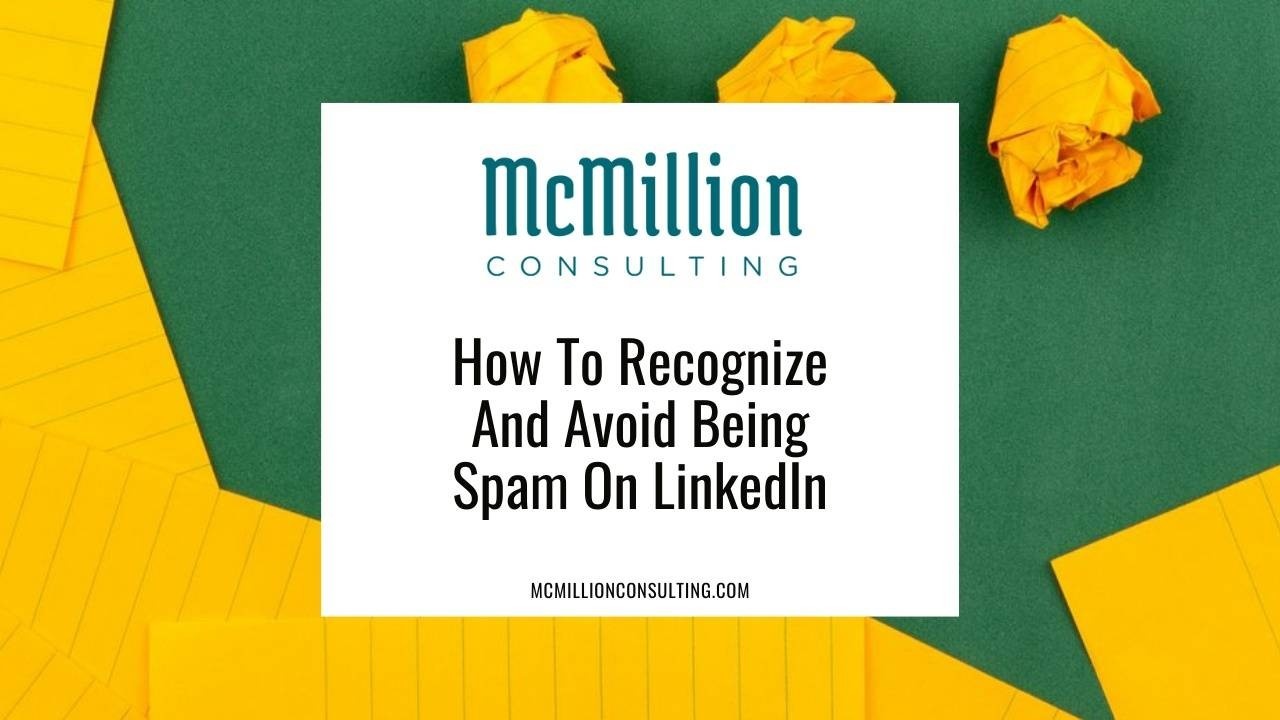How To Recognize And Avoid Being Spam On LinkedIn
Dec 03, 2024
No one likes a spammer. At the end of the day, all spam does is clutter your inbox and waste your time. Sometimes, however, it can be difficult to tell what’s spam and what deserves a response. If you’ve ever had trouble sniffing out spam on LinkedIn, the tips below will help you make the call and respond accordingly.
First off, what is spam anyway? The dictionary definition of spam is: “irrelevant or inappropriate messages sent on the internet to a large number of recipients.” As automation has increased on LinkedIn, many of my clients have reported confusion between automated messages and spam. They are actually not one and the same. Automation can be used effectively to start genuine conversations if it’s done well. Spam, on the other hand, is never welcomed or useful. Here are the telltale signs of spam.
Telltale signs of spam:
Most spam messages will have one or more of the following qualities.
-
Super salesy: As they say, “you’ll know it when you see it.” Usually, your intuition can tell you pretty quickly if a message is really just a mass sales blast that wasn’t curated for you.
-
Poorly written: If the message you received is hard to read or doesn’t make sense, chances are, it’s spam.
-
No relevance to you: Occasionally you might receive a message that sounds like it was written for a completely different person. If that’s the case, it’s probably spam.
Note: If you’re the one sending messages on LinkedIn (with or without automation) make sure your content is relevant and personalized for the recipient so it’s not perceived as spam.
Actions to take:
Now that you’ve determined a message is spam, consider taking one or more actions to mitigate receiving unwanted outreach.
-
Turn off InMail messages.
-
Ignore the invitation. Then, click "I don't know [name]."
-
Remove the connection.
-
Block the person.
-
Report the message using the three dots in the top right corner within the message you received.
-
Get the message out of your Focused inbox and move it to your Other inbox.
Other safety resources:
In my experience, LinkedIn does a great job of keeping its platform safe and secure.
Spam on LinkedIn is usually nothing more than an aggressive sales pitch—annoying, yes, but not dangerous. If you do experience any sort of harassment or have concerns about the security of your account, check out these resources to make things right.
-
LinkedIn’s security hub pulls together guides and articles related to most any security question you might have about the platform.
-
LinkedIn’s Safety Center provides resources for reporting abuse on the platform and keeping your account secure.
Are you ready for more insights that transform your LinkedIn presence? My LinkedIn Leverage Masterclass™ features a simple step by step blueprint to help busy professionals generate more consistent leads on LinkedIn… in as little as 10-15 minutes a day. Get access today and you'll receive a toolkit that includes my Sales Navigator Routine Checklist and several other amazing bonuses, at not extra cost!



